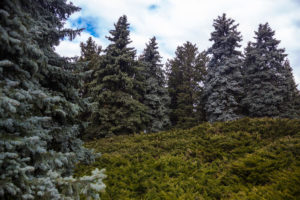
In North America, trees are the largest and most plentiful living organisms – revered and admired by generations.
In the state of Colorado for instance, a group of school children were so enamored by the blue spruce, that they unanimously voted it the state tree back on Arbor Day 1892 – though it wasn’t until 1939 that is was officially adopted.
Together, the blue sprue and fir trees comprise much of the landscape in the mountainous region of Colorado. But all that is changing.

In the last decade, pests like bark beetles have left an estimated 834 million trees standing dead – one in every 14 standing trees. That has increased the number of wildfires, which not only destroys dead trees, but healthy, living ones as well.
Now a new threat is looming for spruce and fir trees in Colorado. A recent report published in the journal Ecology, states that with only a handful of years of above average snowpack and cooler, wetter summer conditions, seedling establishment of these beloved trees has been limited.
In other words, the growth rate of new trees, simply can’t keep up with the exponential losses.
Robert Andrus, the lead author of the study and a graduate researcher in CU Boulder’s Department of Geography says, “Since 1975, there have been fewer favorable years for seedling establishment. Our study indicates that moisture availability is the key driver for these events in Colorado’s high elevation forests.”
In total, the research team counted over 150,000 tree rings from 450 spruces and 500 firs from Rollins Pass to Brainard Lakes Recreation Area in Colorado’s Front Range. The rings helped determine the year the tree was established and could then be compared against data dating back to 1940 relative to climate and snowpack change.
The study suggests that if nothing changes, seedling establishment will continue its downward decline in the state of Colorado. Now is the time to understand this trend and provide land managers across the state with this information, so hopefully a plan can be developed for human intervention.
Distinguished Professor and co-author of the study Tom Veblen says, “This study provides more evidence that climate warming is, and has been, significantly and adversely affecting ecological processes in forests of the southern Rockies. This is not just a future effect, but something that is actually underway.”
For a free spruce or fir tree evaluation, contact SavATree today.
https://statesymbolsusa.org/symbol/colorado/tree/colorado-blue-spruce
https://csfs.colostate.edu/2017/02/15/800-million-standing-dead-trees-colorado/
https://www.sciencedaily.com/releases/2018/02/180222125717.htm